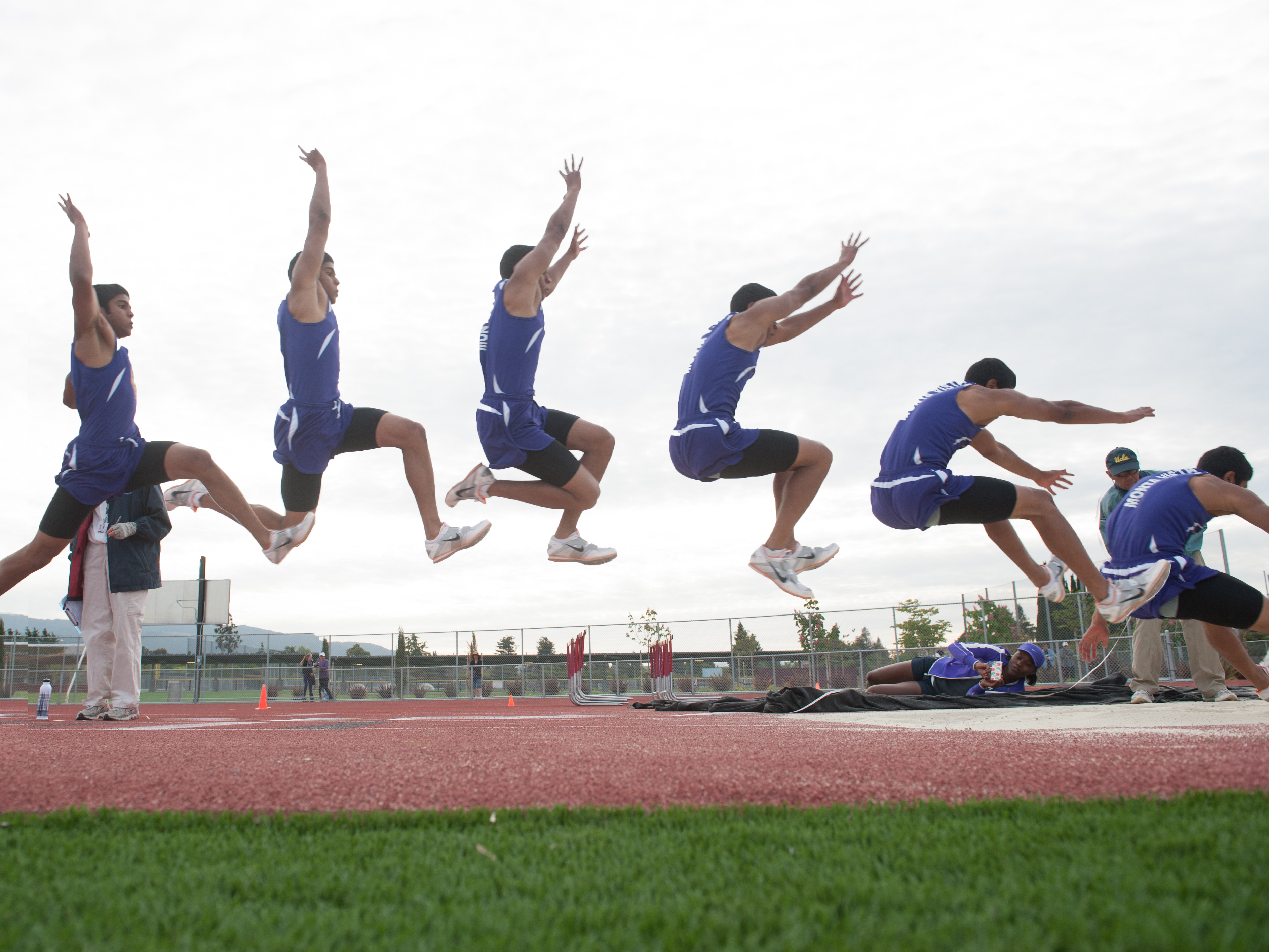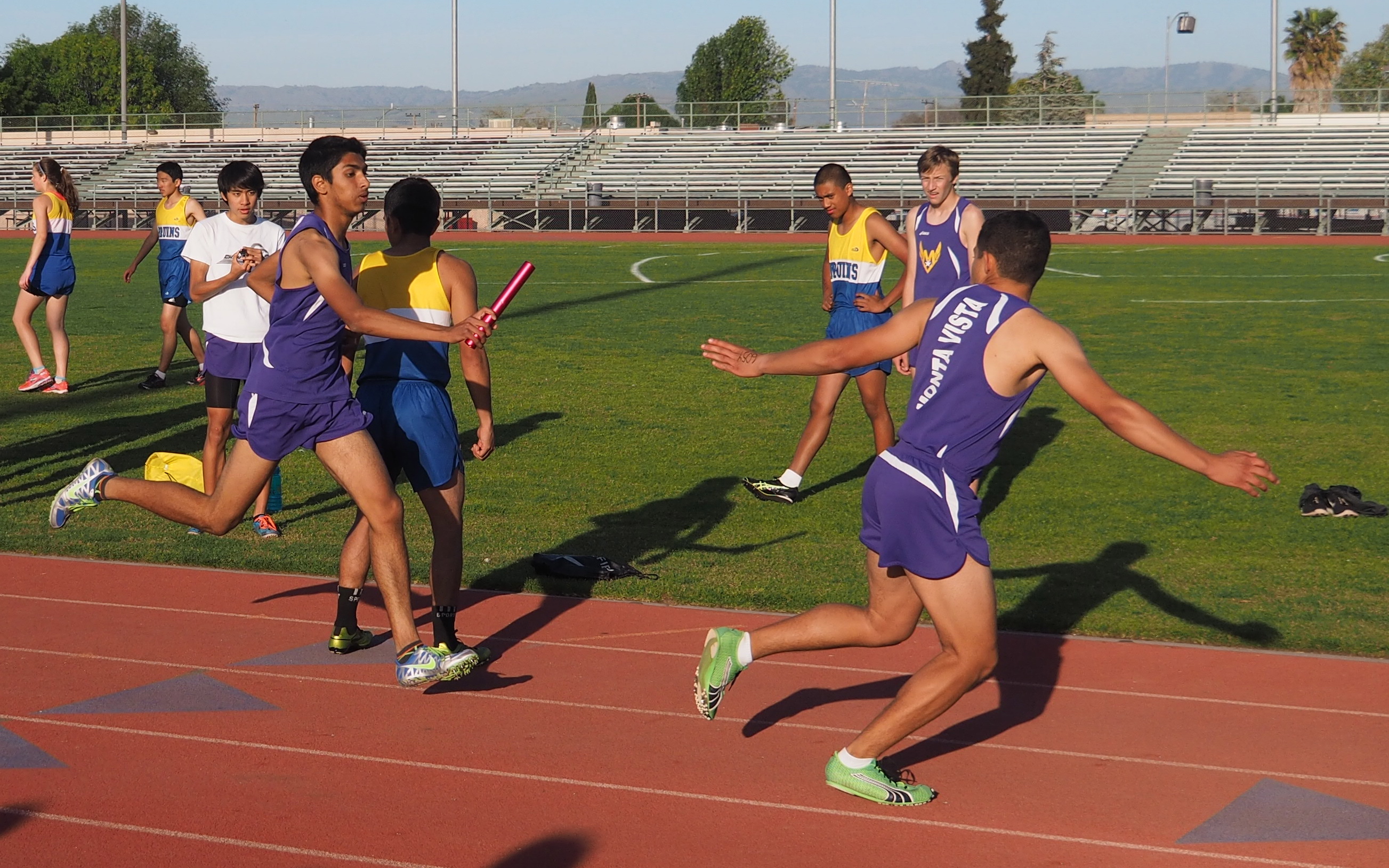
This season we have fewer people, athletes and parents, who have ever seen a dual meet–a track meet with two schools competing. There are questions! Here are some dual meet basics for new and experienced track athletes…
Dual meet competition is the typical format for regular-season high school track and field competition. A dual meet involves competition between all of the athletes competing for two schools (there are also tri-meets or double-duals, which involve three schools). This post is going to focus on how the Santa Clara Valley Athletic League organizes dual meets. What our league does is fairly typical. Different leagues and different states may do things slightly differently, and even some different events that are standard in some leagues or not in others, such as a 4x2oom relay or javelin throw.
In the SCVAL, 15 events are contested between the two schools. Team scores are kept for four divisions (varsity girls, varsity boys, junior varsity girls and frosh-soph boys). Athletes may enter in up to 4 events per meet; athletes can only compete in one division (Frosh-Soph, JV or Varsity) in a single meet but at the next meet, athletes can be moved to a different division (you can compete in different divisions over the course of a season). There are no qualifying standards and there is no limit to the number of athletes a team can enter in each event.
The 1st, 2nd, and 3rd finisher in each event are scored 5-3-1 points. The winning team in a relay event receives 5 points and the other team receives none. (Sometimes you might notice in an event like the 400m, there are only two athletes lined up to start…if you are in that division, and you are in less then four events, you might want to jump in and take third place. That’s a point for your team!)
In SCVAL, we are assigned ID numbers to identify athletes, like bib numbers at cross country meets or at RustBuster. We don’t get bibs, however. At the beginning of a meet, we find our bib numbers (we will have a clipboard for this) and you write your ID number on your hand or arm. Then when you register for an event or finish an event, you show your ID number to an official and after they record your number, your result will be recorded.
At most dual meets, each team will be assigned either ‘odd’ or ‘even’ lanes for the day. For sprint events, if we are the ‘even’ team, we get first choice of lanes 2, 4, 6 and 8 all day long. However if the other team does not use all the odd numbered lanes, FILL IN lanes–we want the meet to run fast, so fill up lanes if you see them! Scoring always comes from the first heat, so if you are one of our fastest three athletes in an event, be sure you take a lane in the first heat of your event.
For field events, check in early! Once competition has started in an event, more athletes may not be added. You have to be registered before competition starts.
Make sure you are at the start line early–you don’t want to hold up the start of an event, or worse, miss your event.
Dual Meets start at 3:30 PM, are always on weekdays. Dual meets end after the 4×400 meter relay, usually between 6 and 7 PM.
| Dual Meet Order of Running Events* | Field Event Guidelines |
|
|
*For most events the order is VG, VB, JVG, FSB. For the high hurdles, the order is VG-JVG-VB-FSB and for the 300m hurdles the order is VB-FSB-VG-JVG. For the 4x400m relay, the order is reversed–JVG-FSB-VG-VB–sometimes genders are combined. For the 3200, all runners in all divisions will start together. For the 800 and 1600, depending upon the number of athletes, we will often combine all the girls or all the boys in to a single heat.
**Most host schools have horizontal jumps run ‘open pit”–athletes come to the jump area, identify themselves, and take their jumps. You have to register first. This allows jumpers to come, jump, leave if they have to compete in another event and come back. It’s always a good idea to get your jumps done early in case the pit is closed down–the pit will not stay open forever if there is no one jumping.

